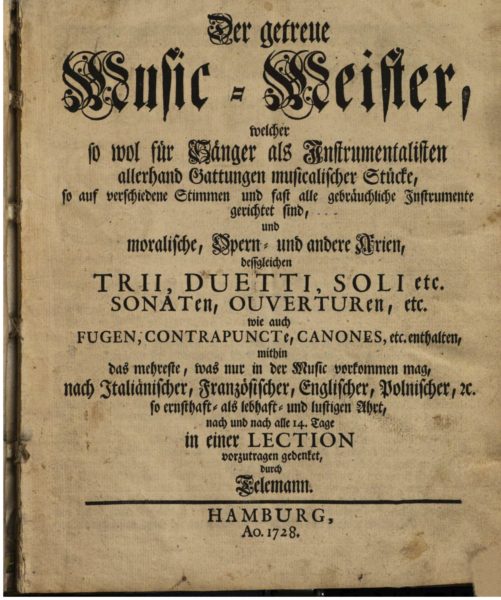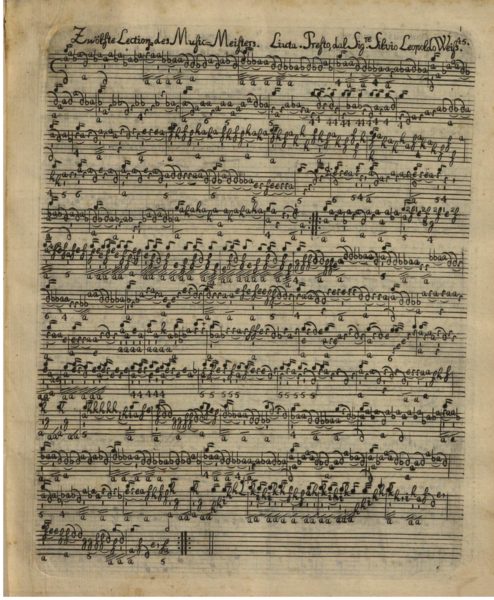2. Weiss The Composer

Silvius Leopold Weiss is my favorite lute composer. His reputation stands today, as in his own time, as the finest lutenist and lute composer of the German high baroque, a period encompassing iterations of baroque style from Corelli and Vivaldi through Rameau. Weiss’ extant output consists mainly of solo lute suites, nearly 100 of them, which he called “sonata” and “partita” interchangeably, and to a lesser extent instrumental ensemble music with lute: concerti, trios, and duets. There is no known vocal repertoire.
The solo music is what Weiss is best known for, if for no other reason than circumstance: with two exceptions, all his ensemble works survive in an incomplete state, in each instance consisting of a single lute part that belongs to a larger instrumental combination, such as a concerto, with all but the solo lute part lost; a duet, but with just one lute part.
In terms of compositional quality, his historical and modern reputation is well earned. People not already familiar with Weiss, who hear his solo lute music for the first time without the composer identified, often guess that they’re hearing something by Bach. To use Bach’s music as a frame of reference, there is a level of structure, complexity and subtlety to Weiss’s writing that falls someplace between that of Bach’s pieces for unaccompanied violin and cello pieces and that of his solo harpsichord suites and partitas.

But just as no two persons’ speech is identical, Weiss’s voice is unique. His tastes tend to be more forward-looking, with many of his middle- and late-period movements resembling what’s now called “sonata” form, a hallmark of later composers like Haydn. The form mirrors that of the expository essay: a thesis, its development with digressions, and a summary. His music also firmly inhabits the idiom of the lute, which he exploited to flatter the instrument to an extent that few have equalled, and none have surpassed.
Weiss worked for most of his career at the court of Dresden where, despite playing the softest of instruments, he was the highest paid instrumentalist on the Hofkapelle’s payroll. Only one of his pieces was published and survived to the present day: a single movement from Sonata 49, printed in Georg Philipp Telemann’s periodical, The Faithful Music-Master (Der Getreue Musik-Meister, Hamburg, 1728–1729). Everything else is found in 64 surviving manuscripts.
For the lute-curious…

I recommend these recordings, for which I’ve provided amazon.com links, for a very satisfying taste of Weiss’s early, middle and late styles. (The sonata numbering is not meant to reflect chronology.)
- Early:
Sonata 9 in C minor. The Heart Trembles with Pleasure. Nigel North, lute. BGS. - Middle:
Sonata 49 in B flat major. Weiss: Lute Sonatas, Vol. 1. Robert Barto, lute. Naxos. - Late:
Sonata 43 in A minor. Silvius Leopold Weiss. Evangelina Mascardi, lute. ORF.
